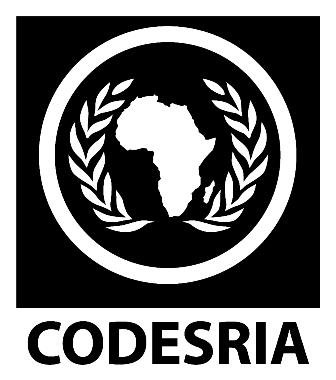Women in non farm micro enterprise development and rural poverty reduction in Kassena-Nankana district of northern Ghana
Mots-clés :
Women, business management, household income, small enterprises, entrepreneurship, poverty alleviation, informal sector, micro enterprise development, non farm enterprisesSynopsis
Poverty is widespread in rural Kassena-Nankana District of Northern Ghana and
has had adverse implications on household incomes, nutrition and health, education and
accessibility to potable water among rural households. In its gender dimension, rural
women are among the poorest of the poor owing to the following: firstly, that women
have limited ownership and decision-making influence over household agriculture
resources owing to a patriarchal orientation of hoùseholds; and secondly, that the impact
of poverty is much felt by wonien as it directly impinge on their reproductive and
normative roles in the household. In order to improve upon their situation, women have
long been engaged in ttaditional non-farm enterprises as an economic means to support efforts at meeting household basic necessities. Their handicap is their low production arising from the underdevelopment of the very non-farm enterprises that they are engaged in. Whereas their underdevelopment underpin that problems besiege these enterprises, their survival and tie to subsistence of household point to potèntialities of these enterprises. The study in this light, set out to find out whether rural Women's Entrepreneurs were contributing to household poverty reduction from these non-farm enterprises that they engage in.
Téléchargements
Références
Ablordeppey, S. D (2003). "Influx of imported items impedes SMEs growth" Daily Graphie: Business and Finance, 24 June 68
Bacho, Francis Z.L (2001 ). Infrastructure delivery under poverty. Potable water provision through collective action in Northem Ghana. Dortmund, SPRJNG Center Research Series No.34 of University of Dortmund.
Binka, F., Ngom, P., Phillips, J.F., Adazu, K. and Macleod, B.B (1994) Assessing Population Dynamics in a Rural African Society: The Navrongo Demographic Surveillance System. Navrongo Health Research Centre Working Paper Series No.3.
Chambers, Robert (1983). Rural Development: Putting the Last First. England, Longman Group U .K. Limited.
Ghana, Republic (1996). The New Local Govemment System. Accra, Ministry of Local Government and Rural Development.
Ghana, Republic (2001 ). Ghana Poverty Reduction Strategy: Poverty Reduction Policy Framework. Accra, Office of the President.
Ghana, Republic (2000). Ghana Living Standards Survey. Report of the Fourth Round Accra, Ghana Statistical Service.
IFAD (2001). Rural Poverty Report 2001. The Challenge ofEnding Rural Poverty. New York: Oxford University Press Inc.
Karia, Wanja M. (1996). "Incarne Generating Activities ofWomen and their Contribution to Household Expenditure. The Case of Keta District, Ghana" Unpublished M.Sc. Development Planning and Management Thesis Submitted to
the Department of Planning, University of Science and Technology, Kumasi.
Kassena-Nankana District Assembly (1996). Medium Term Plan (1996-2000). Navrongo, Ghana.
Kassena-Nankana District Assembly (2001). Second Medium Term Development Plan: (2001-2005). N avrongo, Ghana.






